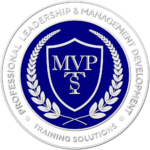When it comes to building a thought leadership strategy, it’s all about being authentic. People want to hear what you have to say because they want to learn from you and be inspired by you.
That means that the best way to build your thought leadership strategy is by focusing on what matters most: your values and your mission.
What Does It Mean to Be a Thought Leader In Your Industry?
Whether a small business owner or an established company, you want to stand out and make an impact. You want to be recognized for the work that you do and for the value that you provide. To do this, you need to motivate your team through effective leadership strategies.
But what does it mean to be a thought leader in your industry? And how can you build a strategy for thought leadership?
This article will walk you through the steps of building an effective team leadership strategy and give tips on ensuring it works.
What Is Thought Leadership?
Thought leadership is when someone has achieved renown as having deeply insightful ideas or opinions on matters of interest within their field. It’s also known as “thought leadership” or “leadership by influence.”
That doesn’t necessarily mean they have huge amounts of money or power; instead, they have something meaningful to offer.
They’re not just another voice in the crowd—they’re recognized as being ahead of their peers in terms of insightfulness or influence over others’ opinions on important topics.
Thought Leadership Is a Hot Topic These Days!
So, how do you get started with your thought leadership strategy?
You must start by determining what kind of thought leader you want to be. There are different types of thought leaders, and they all have their unique approaches.
For example:
The opinion leader offers their own opinions on issues and trends. In management positions, they can influence company policies, practices, and cultures. This type of leader has much power in their organization because they have direct access to decision-makers.
The expert provides expert opinions on topics related to their field or industry. Experts have earned credibility through education or experience, making them valuable resources for others in the same field or industry. And there are experts in many industries, including healthcare, finance, and technology.
The visionary shares ideas about the future that help people understand what is possible today through new technologies or processes that have yet to be widely adopted.
Moreover, the future trends that may impact business models over time and long-term issues like climate change could drive changes in consumer behavior over time (e.g., buying more electric vehicles).
How to Build a Thought Leadership Strategy – The Crucial Insights:
You’re tired of the same old, boring stuff. You want to be a thought leader but don’t know where to start. You’ve got a lot of ideas, but no one is listening.
Well, here’s how to build a thought leadership strategy:
1. Identify Your Audience
Who is going to be interested in what you’re saying? What are their needs, and how can your expertise help them? What do they want from you?
If you can’t answer these questions, then it’s unlikely that anyone else will either.
2. Get Clear on Your Values
Why are you doing this? What do you stand for? What beliefs drive your work? How does that align with your target audience’s values?
If there’s any dissonance between the two, it’s time for serious reflection before moving forward with further steps!
3. Create an Editorial Calendar
Once you’ve identified your target audience, create an editorial calendar.
This will help keep everything organized by keeping track of topics that need addressing and helping set deadlines to publish all the content on time (and not just when it gets written).
4. Optimize your Social Media Presence
This is important because the people reading your content are more likely to be interested in your company’s products or services if they know who you are and what you stand for.
When it comes to social media, you must understand where your audience hangs out when they’re online.
